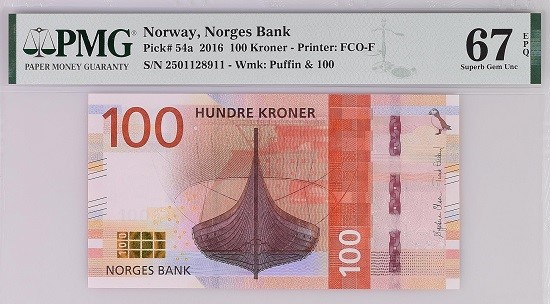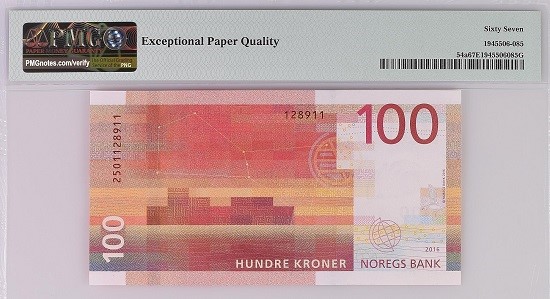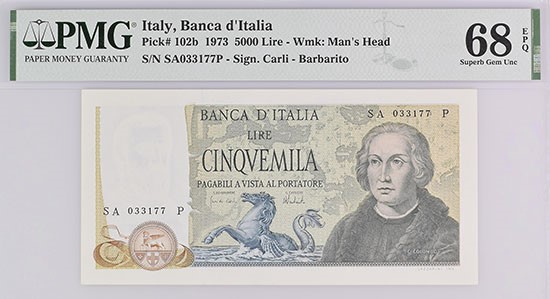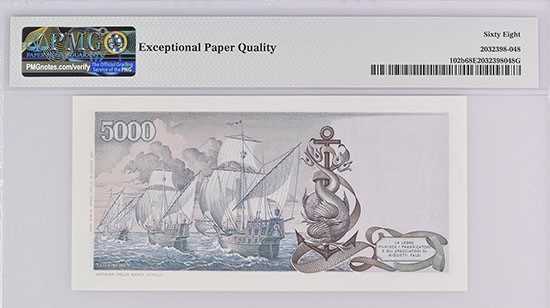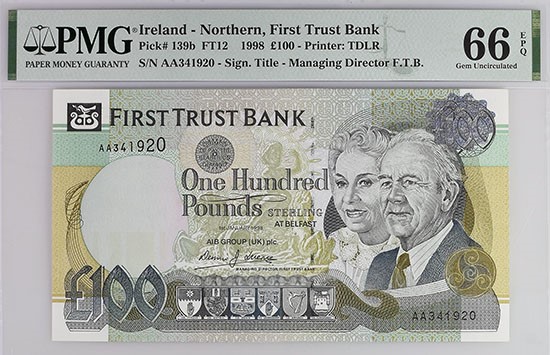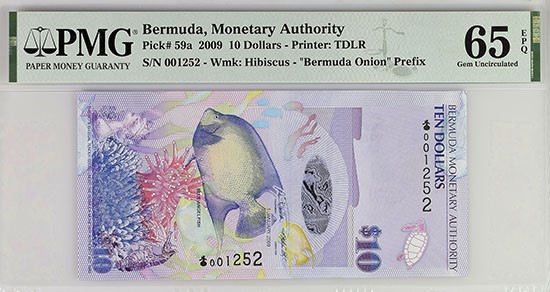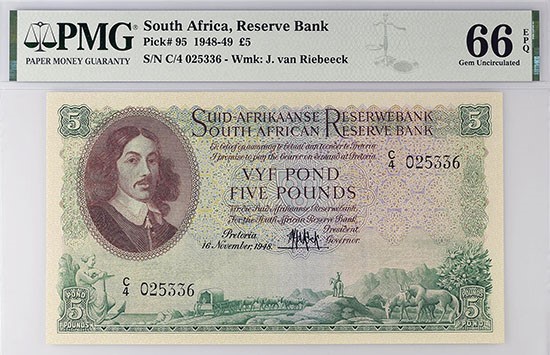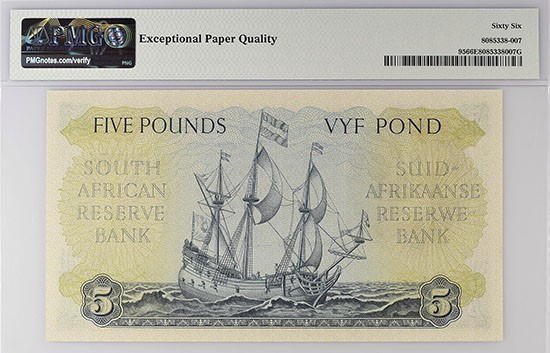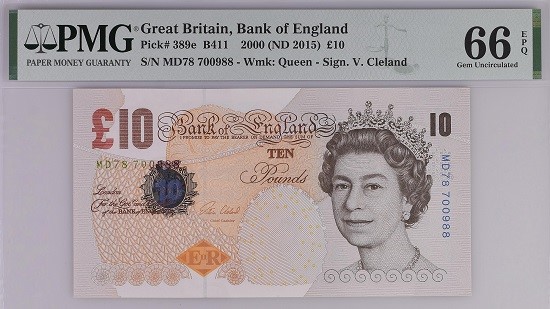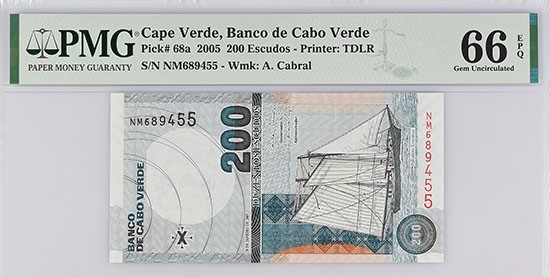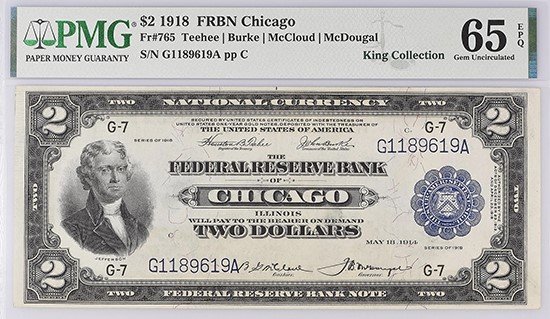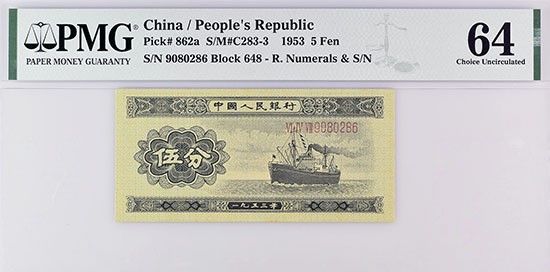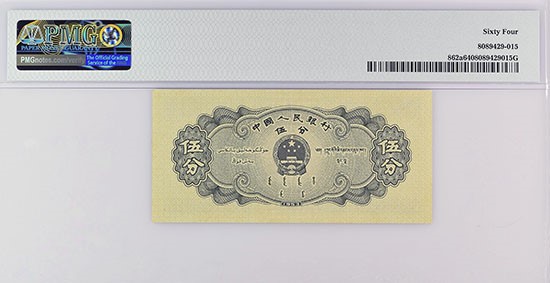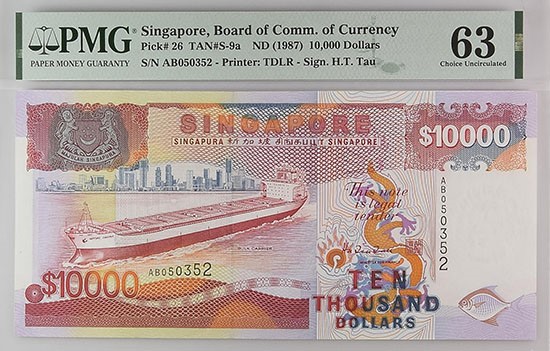Collection Inspiration: Ships
Posted on 2/15/2022
Paper money collectors often focus on a particular nation or even a particular series. This column is designed to offer ideas for building a collection of notes from around the world based on a common element. This month, we look at famous ships that have shaped the world and are honored by different nations.
Norway — Gokstad Ship
Built in the 9th century, during King Harald Fairhair's reign, the Gokstad ship was intended for transportation, trade and war. This Viking ship, roughly 78 feet long and 16 feet wide, was later interred in a burial mound in Gokstad, Norway, where it remained for centuries. It was rediscovered in 1880 and is now displayed in the Viking Ship Museum in Oslo, Norway, as well as on the front of a 2016 100 Kroner.
Italy — La Niña, La Pinta and La Santa Maria
La Niña, La Pinta and La Santa Maria were three famous caravel ships that sailed under Christopher Columbus in 1492 during his historic transatlantic voyage. They are shown on the Italy 1973 5,000 Lire. La Niña (The girl) was originally called Santa Clara and was the smallest of the three. It vanished from the historical record after 1501, when it made a trip to the Pearl Coast near Venezuela. La Pinta was the fastest of the three ships, and its fate is unknown. La Santa Maria, originally called La Gallega, was the largest of the three. The ship was damaged beyond repair on Haiti’s shores on Christmas Day 1492. Columbus ordered that the ship’s timber be used to construct a fort named La Navidad. Although the location of the fort is lost, one of La Santa Maria’s anchors rests at the Pantheon National Haitian Museum in Port-au-Prince.
Northern Ireland — The Spanish Armada
In 1588, a fleet of 130 ships sailed from Spain to invade England and overthrow Queen Elizabeth I. Considered one of the greatest naval victories, the English ships scattered the Spanish fleet at the Battle of Gravelines. The Armada is seen on the back of this Northern Ireland 1998 £100 banknote.
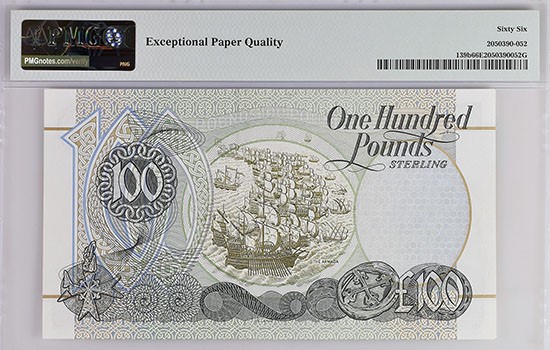 |
|
| Northern Ireland, First Trust Bank 1998 £100 graded PMG 66 Gem Uncirculated EPQClick images to enlarge. | |
Bermuda — Deliverance
As England focused on settling the New World, the colony of Jamestown was established in 1607. To increase the survival rates of the fragile, new colony, King James I of England sent a flotilla with much-needed supplies in 1609. A ferocious storm separated the ships, with one landing on Bermuda’s shores. The survivors constructed a settlement and built the first two ships in Bermuda: Deliverance and Patience. A replica of the Deliverance is shown sailing in front of the governor’s house on the back of the colorful Bermuda 2009 10 Dollar banknote.
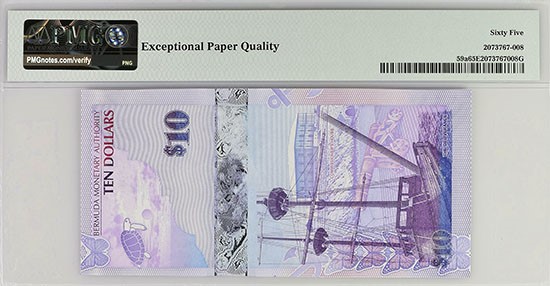 |
|
| Bermuda, Monetary Authority 2009 10 Dollars graded PMG 65 Gem Uncirculated EPQClick images to enlarge. | |
South Africa — Drommedaris and Goede Hoppe
Dutch navigator Jan van Riebeeck was asked by the Dutch East India Company to take command of a settlement located in South Africa. In 1652, Riebeeck landed two ships, the Drommedaris and Goede Hoope, in Table Bay, now known as Cape Town. One of these ships is shown sailing on the back of a South Africa 1948-49 £5 banknote.
Great Britain — HMS Beagle
The HMS Beagle was a Cherokee-class brig-sloop made famous by transporting scientist Charles Darwin around the world. From 1831 to 1836, the vessel was used for a survey expedition throughout South America and New Zealand. An account of the journey that was published in 1839, called The Voyage of the Beagle, became an important narrative among the scientific community. After three multi-year voyages, the Beagle was decommissioned. A British 2000 (ND 2015) £10 banknote pays tribute to Darwin and his famous voyage.
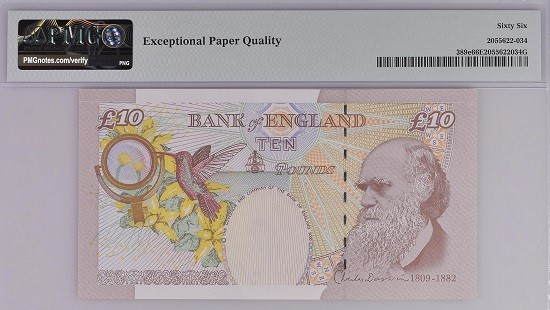 |
|
| Great Britain, Bank of England 2000 (ND 2015) £10 graded PMG 66 Gem Uncirculated EPQClick images to enlarge. | |
Cape Verde — Ernestina
Originally named Effie M. Morrissey, the fishing schooner was used for scientific expeditions to the Arctic. After a decades-long career, the ship was sold in the mid-1940s and was used as a packet boat in a trans-Atlantic crossing between New England and Cape Verde, off the coast of West Africa. The captain, Henrique Mendes, renamed the ship Ernestina after his own daughter. In the 1980s, the people of Cape Verde gifted the schooner to the United States. Today, the ship resides in Massachusetts's New Bedford Whaling National Historical Park.
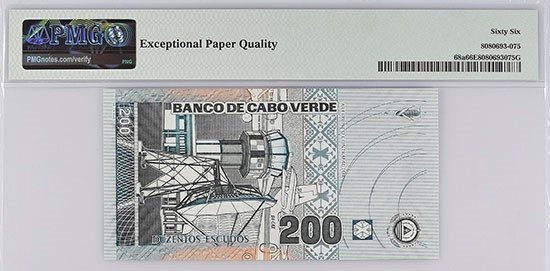 |
|
| Cape Verde, Banco de Cabo Verde 2005 200 Escudos graded PMG 66 Gem Uncirculated EPQClick images to enlarge. | |
United States — USS New York
This battleship was the leader of its class and was the first ship to carry a 14-inch/45-caliber gun. At the beginning of World War I, The New York entered service for the US Navy and is believed to be the only US ship to sink a German U-boat during that conflict. During World War II, the ship's first combat experience was against coastal artillery near Casablanca in North Africa called Operation Torch. Later, the ship provided gunfire support during the invasion of Iwo Jima and Okinawa. The USS New York was awarded three battle stars for its service and was sunk in 1948. The 1918 $2 Federal Reserve Bank Notes showing this vessel are nicknamed “Battleship” notes.
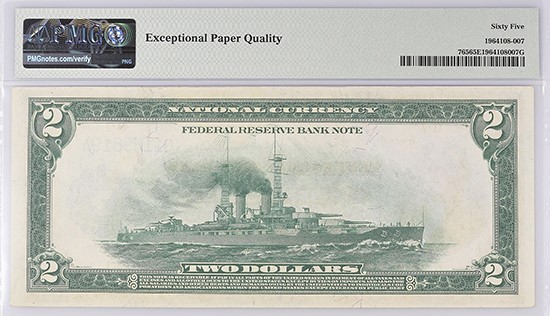 |
|
| US 1918 $2 Federal Reserve Bank Note (Chicago) graded PMG 65 Gem Uncirculated EPQClick images to enlarge. | |
China — Hailiao
The Hailiao was built in the United States in the 1920s and was later sold to China. It is revered in the People’s Republic of China for a being the first to fly the 5-star Chinese flag after the crew revolted. The ship is proudly displayed on the front of the China / People’s Republic 1953 5 Fen banknote.
Singapore — Neptune Canopus
The Singapore ships series of banknotes includes one showing the Neptune Canopus, a bulk carrier-class merchant ship designed to transport bulk cargo. It is shown on this Singapore ND (1987) 10,000 Dollars sailing in front of the skyline of the Southeast Asian city-state with a rich maritime history.
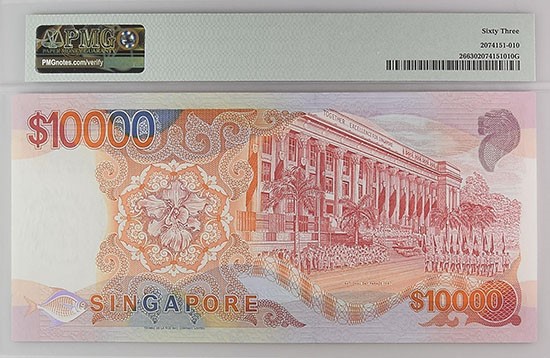 |
|
| Singapore, Board of Commerce of Currency ND (1987) 10,000 Dollars graded PMG 63 Choice UncirculatedClick images to enlarge. | |
Be sure to check out other Collection Inspiration articles such as Vintage Airplanes and Natural World Heritage Sites for other collecting ideas.
Stay Informed
Want news like this delivered to your inbox once a month? Subscribe to the free PMG eNewsletter today!
